
Backlinks are an essential ranking factor. High-quality links from websites in your niche build authority and push your site up results pages on the search engines.
But links can also hinder progress if you build them in the wrong way.
Links that negatively affect your search rankings are called toxic backlinks. They tell Google that you’re using spammy link building techniques, which can result in rankings penalties.
With this in mind, you should regularly check your backlink profile to see if your site has links that look toxic. If it does, you can make an informed choice about whether to keep or remove them.
And remember: it’s possible to have toxic backlinks even if you never actually built any yourself.
This could be due to previous website owners, spammy SEO services, or even negative SEO attacks.
Key Takeaways
Toxic backlinks are low-quality links that can harm your search rankings.
Toxic backlinks occur when you or someone you have hired points spam links towards your website. They may also occur due to a negative SEO attack.
The Google algorithm often ignores toxic backlinks, but sometimes they result in a ranking penalty.
You can fix toxic backlinks by asking the website to remove the link to your site, or by disavowing them in Google Search Console.
What Are Toxic Backlinks?
Toxic backlinks are links from other websites that have the potential to harm your website’s search rankings.
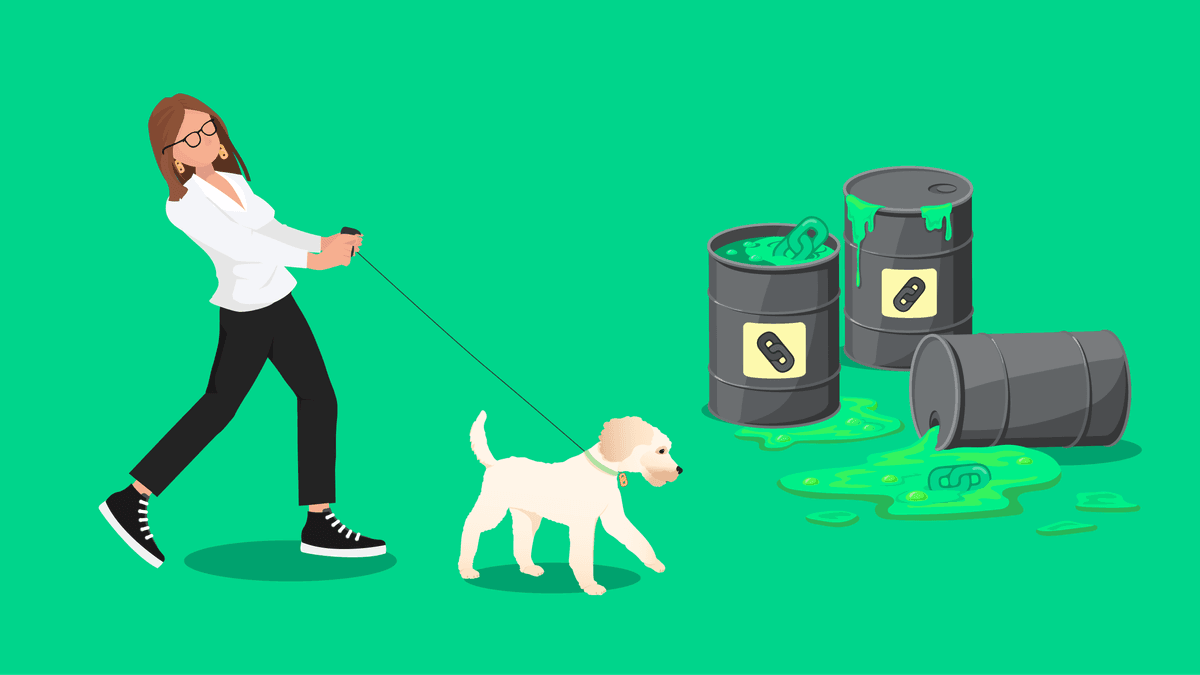
They have a negative impact because they are built using methods that go against Google’s search guidelines. They typically come from low-quality sites such as private blog networks (PBNs), link farms, or directories.
But any type of link scheme, which is when you build links to your sites to artificially increase your Google rankings, can result in toxic links.
It’s worth noting that not all toxic links will harm your rankings. Google will often ignore the link—you won’t benefit from it, but it also won’t harm your rankings.
In rare cases Google’s algorithm won’t be able to tell that the link is unnatural, so you may even see a rankings boost. An example of this is if you build a PBN that Google hasn’t yet identified.
The issue is that as soon as the search engine discovers the network, it will disqualify the links. This may lead to a drop in rankings.
Why Do Websites Have Toxic Backlinks?
Sites typically have toxic backlinks for one of four reasons. Here is a rundown of each one.
1) They Didn’t Know the Link Was Toxic
Not everyone who owns a website is an SEO specialist. Many people are business owners and running sites is not their area of expertise. It’s easy for these people to build toxic backlinks accidentally.
For example, we recently received an email to one of our website email addresses. The email contained a list of websites that the sender was selling links on. You can see the sites in the image below.
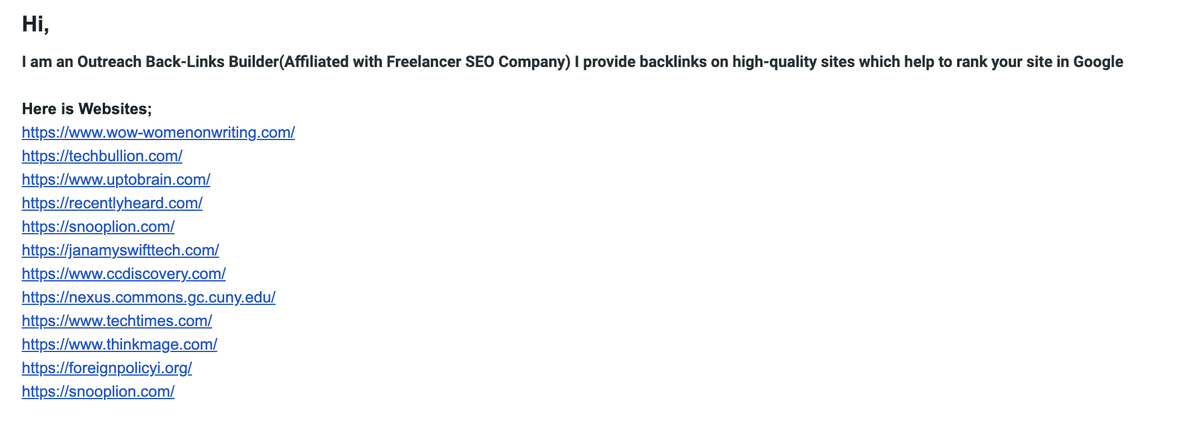
We’re experienced link builders, so we know that any link we get from one of these sites has a high chance of being toxic.
But not everyone has our expertise. And it would be easy for a regular business owner to buy one of these links thinking it will increase their rankings.
Often times, people will be actively building these links in the hope they'll be having a positive impact, but in reality they're just doing absolutely nothing beneficial for your website.
2) They Used a Toxic SEO Service
Cheap or low-quality SEO services often build low-quality backlinks to their website clients.

When these services build links on directories or PBNs, they can show their clients results without having to put much effort into actually building the links.
The service will often own the PBN or have a relationship with the owner. Building the link requires little more than editing an existing page on one of their websites.
If the client isn’t SEO-savvy, they won’t know the difference between the spam backlinks the service is building and regular high-quality links.
The good news is that there are plenty of ways to tell apart a quality backlink service from a spammy one.
How to Spot a Spammy Link Building Service
🔎 Look for services with case studies from reputable brands. The more information they provide about their service and results, the more you can trust them.
🛑 Avoid services that promise rapid links. This is a clear sign that they are just adding your links to articles on their own network.
💰 Avoid low-cost services. While it’s tempting to get cheap links, building good links is resource-intensive. At LinkBuilder we employ a team of full-time strategists and outreach specialists. We also hire freelance writers, designers, and programmers. Low-cost services don’t have access to this expertise, which typically results in bad links.
🤝 Be wary of specific guarantees. If a service guarantees links on a particular site, it is probably a link farm or part of a PBN.
The best way to ensure your link building service doesn’t generate bad links is to learn about link building and assess the links yourself.
This article goes into further detail about how to outsource link building.
3. They Suffered a Negative SEO Attack
Negative SEO attacks are when a black-hat SEO link points toxic backlinks towards another website.
If someone owns a PBN that Google knows about, it’s easy for them to point a ton of links from this PBN to the target website. The links will often use spammy anchor text, and they will sometimes come from websites with adult content.
The spammers hope that by doing this, Google will see the links and think that the target website is using a PBN to generate the links. Google will then punish the website in question, thus killing its rankings.
The spammers usually own or are paid by a website in competition with the site they target. When the target website loses its rankings the website belonging to the person who performed the attack has a higher chance of ranking.
The good news is that Google is quite adept at spotting negative SEO attacks and completely discrediting those links.
The algorithm will usually identify and ignore these links. And if for some reason it doesn’t, you can always disavow any spammy backlinks.
Link Spam Isn’t the Only Form of Negative SEO 😨
Other types include:
Hacking a website to reduce its SEO ranking ability
Duplicating a website's content and publishing it on another website
Sending out fake backlink removal requests to remove your legitimate links
What Happens If Your Site Has Toxic Backlinks?
The exact impact of your toxic backlinks depends on multiple factors.
Typically, negative SEO attacks or one-off spammy backlinks won’t result in any issues. But if you have built toxic backlinks at scale, the impact can be quite serious.
Here are the three most likely outcomes of toxic backlinks.
1) Google Will Ignore the Links
The most likely outcome of low-quality backlinks is that nothing happens at all.
Google’s algorithm is becoming increasingly adept at spotting low-quality or spammy links. This means the majority of links that would once have been considered toxic are now simply ineffective.
This doesn’t mean you should go out and build lots of toxic links. The more links you have pointing to your site, the more likely it is that you will receive a manual penalty.
And even if you don’t get a manual penalty, you’ll be wasting your time as these links have no positive value.
2) You’ll Receive a Manual Action
The worst result of toxic backlinks is that you receive a manual action.
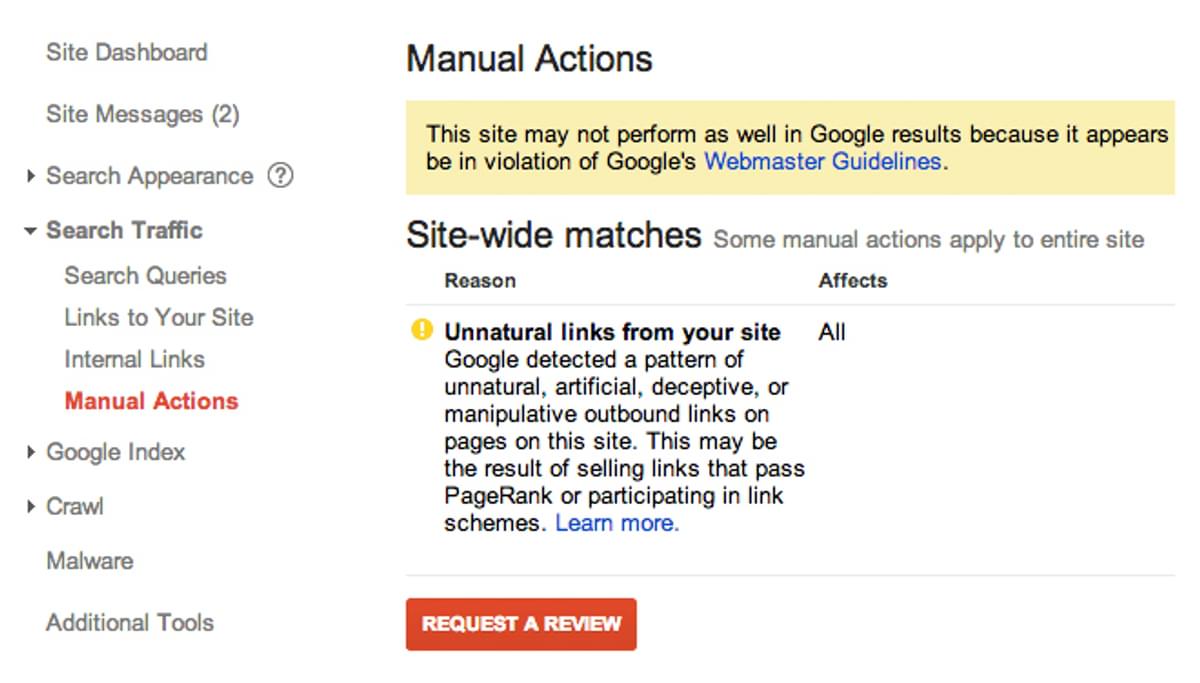
This is when a Google Search evaluator assesses the links on your website and decides that they break the company’s quality guidelines.
We should note that these are much more rare nowadays than they were a few years ago!
Manual actions almost always result in the affected page or website having lower rankings than it would otherwise. Sometimes, Google will remove the page or your website from the search engine’s index entirely.
If your site is affected, Google will explain the issue so you can fix it.
How to See If You Have a Manual Penalty 🔎
It’s easy to discover whether you have a manual penalty.
Just follow these steps:
Open up Google Search Console
Click the “Security and manual actions” tab
Choose “Manual actions”
If you have an issue, you will see it on this page
You can then follow the instructions to fix the problem
Toxic backlinks are just one possible reason for a manual action. Google hands them out for various search-related issues including thin content, spam, and keyword stuffing.
3) Google Won’t Spot Them (For Now)
Sometimes Google won’t be able to tell if a backlink is low quality. In this case, you may benefit from the spam link.
But this doesn’t mean that Google won’t discover the link in the future. And when it does, the algorithm will ignore the links.
When this happens your rankings may drop, as the positive impact you gained from the links will be lost.
Types of Toxic Backlinks
Here are some of the main types of toxic links to look out for.
1) PBN Links
Private blog networks (PBN) are networks of websites used to build links to another site.
This means that PBN backlinks can be highly toxic. If Google can tell the links are from a PBN, the search engine algorithm will either ignore the link completely or give you a penalty.
If the PBN is well hidden, it can be an effective way to increase a site’s ranking. But it’s still a ticking time bomb that will go off as soon as Google discovers the bad links, or if the PBN owner decides to get greedy and sells too many outbound links on their network.
2) Link Farms
Link farms are websites that exist solely to provide paid links to other sites. The owner of the link farm typically earns money by charging other website owners (or low-quality link building services) a fee to place links to their site on the website.
These links are highly toxic. The Google algorithm can easily tell a real website from a link farm and it will use this information to ignore the links. The end result is that you’ll waste time and money generating links, or receive a manual penalty.
This article contains all you need to know about link farms, including examples of how to spot them.
3) Low-Quality Directory or Bookmark Sites
Directories, forums, communities, and bookmark sites are easy ways to generate backlinks to your website. Just create a profile on these sites and then add your own links.
This isn’t always problematic. This method of link building is commonly called pillow link building, and links from high-quality websites can benefit your site significantly.
For example, it can be advantageous for a hotel owner to add its website to travel directories like Lonely Planet.
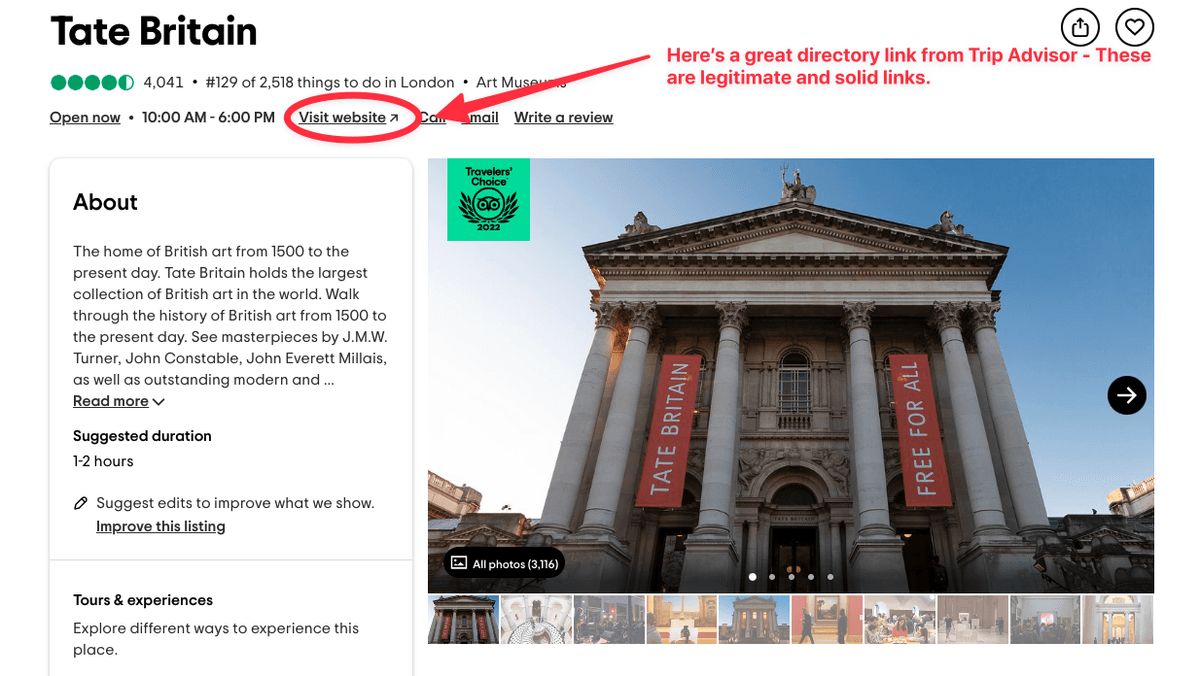
But these links can become toxic if you use directories solely to point links to your website. This happens when you add links to your website on low-quality directories or forums.
These sites will typically not have any real audience, and they’re more akin to link farms than genuine directories.
Other Types of Toxic Links
Comment links: Comment links are when you comment on an article and drop a link back to your site. These links aren’t problematic. But it is an issue if you use a program to automatically generate thousands of these links at the same time.
Press release links: This is where you distribute (often unnecessary) press releases to multiple sites and include exact match anchor text pointing back to your website.
Template links: This is when people create plugins or templates for other website users that include embedded links back to their own website.
It’s worth noting that the above links aren’t always toxic. Google will not punish you if you create a legitimate press release and link back to your website, or write a relevant comment with a link to your site.
The problem occurs when people abuse these strategies to generate a high number of links at scale in an attempt to trick the Google algorithm.
Telltale Signs of a Toxic Link
While it’s good to know the types of links that can be toxic, it’s not much use unless you actually know the signs that show a link is problematic.
You can use Google Search Console or SEO tools to see your link profile and then check the sites manually.
Alternatively, some SEO tools highlight links that they think are toxic based on their own metrics.
SEMRush, Moz, and Majestic all offer a backlink audit feature. These features assess all the domains that link to you and highlight any that the tool considers toxic.
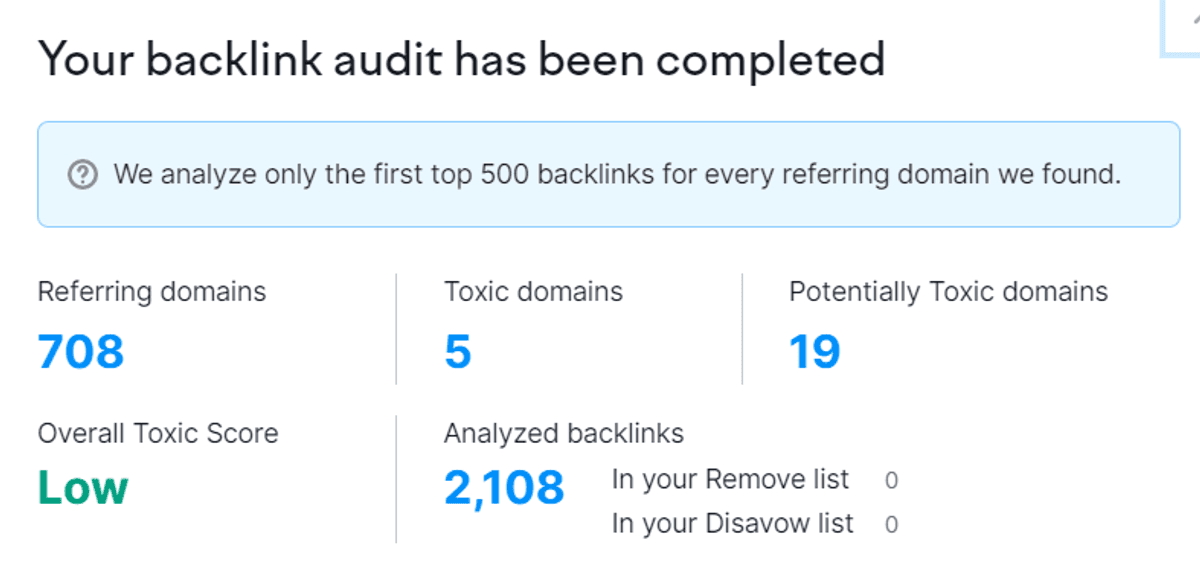
You can then check out the websites directly and, if you agree that they are toxic, automatically generate a disavow file that tells Google to ignore the links.
Some telltale signs of a toxic backlink include:
Low-quality sites: Low-quality sites are the biggest sign of toxic backlinks. Look for poorly written content and templated site designs. A lack of information about who is running the website is another key sign.
Unnatural links: This is when there doesn’t seem to be any reason for a piece of content to link to a particular site. The link in the image below is a good example of this. There’s no reason for this site to link to a San Diego employment lawyer’s office other than to build a link.

Keyword match anchor text: Keyword match anchor text is when the link is attached to the keyword the article wants to rank for—like in the example above. It’s a sign that someone has paid for a link because it’s rare for people to attach links like this. Not all links with keyword match anchor text are toxic, but it is a good sign.
Unrelated anchor text: Links with anchor text that is completely unrelated to your website content can be signs of a negative SEO attack. Foreign language anchor text can also be a sign of a toxic link.
Low organic traffic: Most toxic sites have low organic traffic. You can use an SEO tool to check the traffic a website receives.
Ultimately, all these signs combine to give you a feeling about the website quality. Links from websites that don’t offer value are usually toxic.
How to Remove Toxic Links?
Removing toxic backlinks is a fairly straightforward process.
You have two main options:
1) Contact the Webmaster
The first option is to contact the webmaster of the sites that host the backlinks and ask them to take them down.
Google recommends this as a first step. In reality, if the links are on spam websites or PBNs the person behind the site is unlikely to spend their time taking down your links.
This brings us to the second option.
2) Disavow the links
Disavowing links is when you tell Google to ignore certain links pointing to your website.
You just need to create a text file with a list of all the domains you want to disavow links from and then upload to it your Search Console domain property.
The search engine will then tell its crawlers to ignore the links in the page.
Be Cautious When Disavowing Links
Only remove links when you are sure they are either negatively impacting your website, or may do in the future. If you accidentally remove links that have a positive impact, your site’s search performance may decrease.
3) Use a Link Building Agency You Trust
The final method to build non-toxic backlinks is to use a reputable link building agency you trust to build high-quality back links.
LinkBuilder has years of expertise in generating quality links for clients in a range of industries.
We’re incredibly open about our practices, so you can be sure we only generate quality links. Check out our case studies page to see examples of the links we build.


